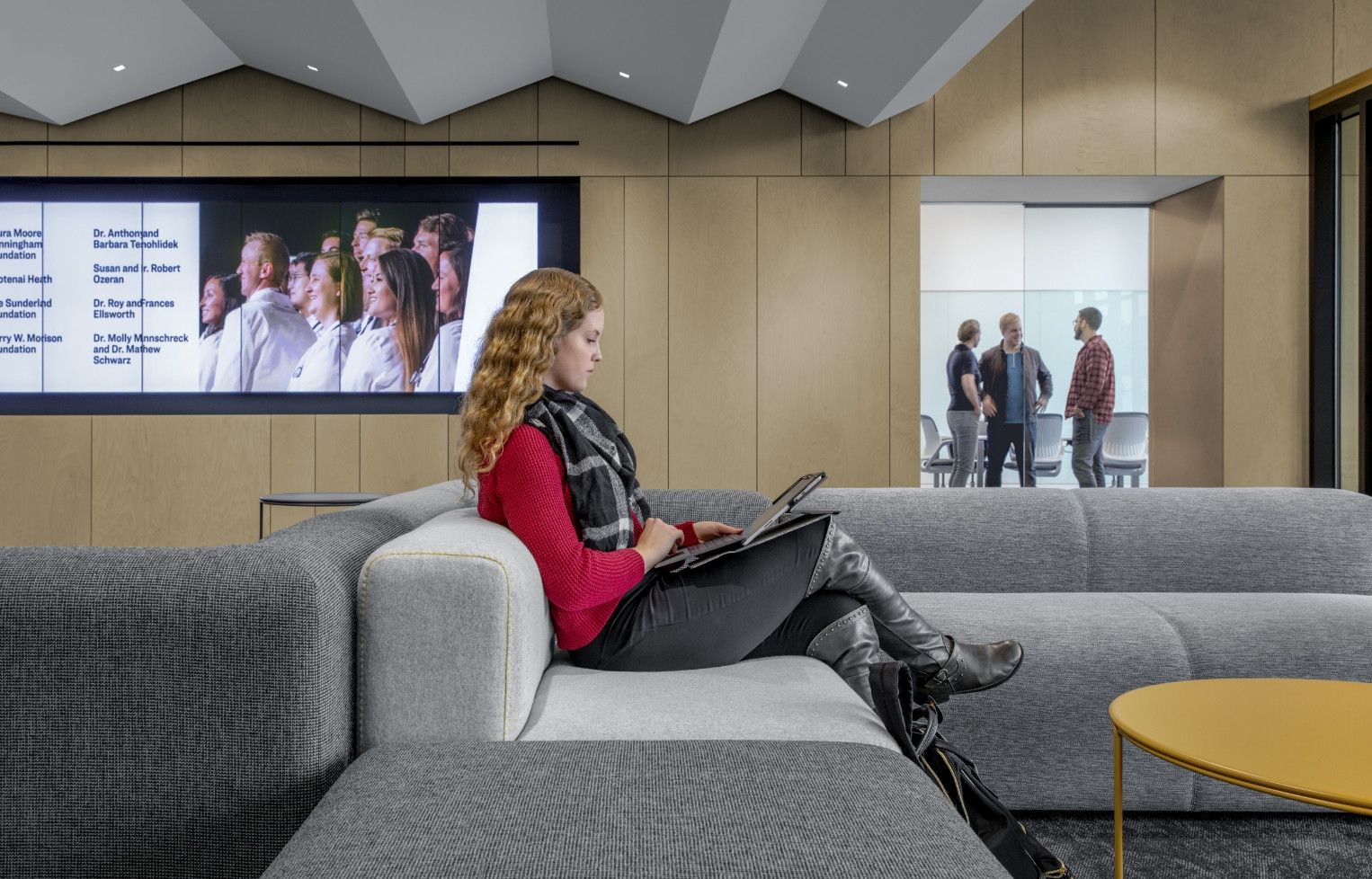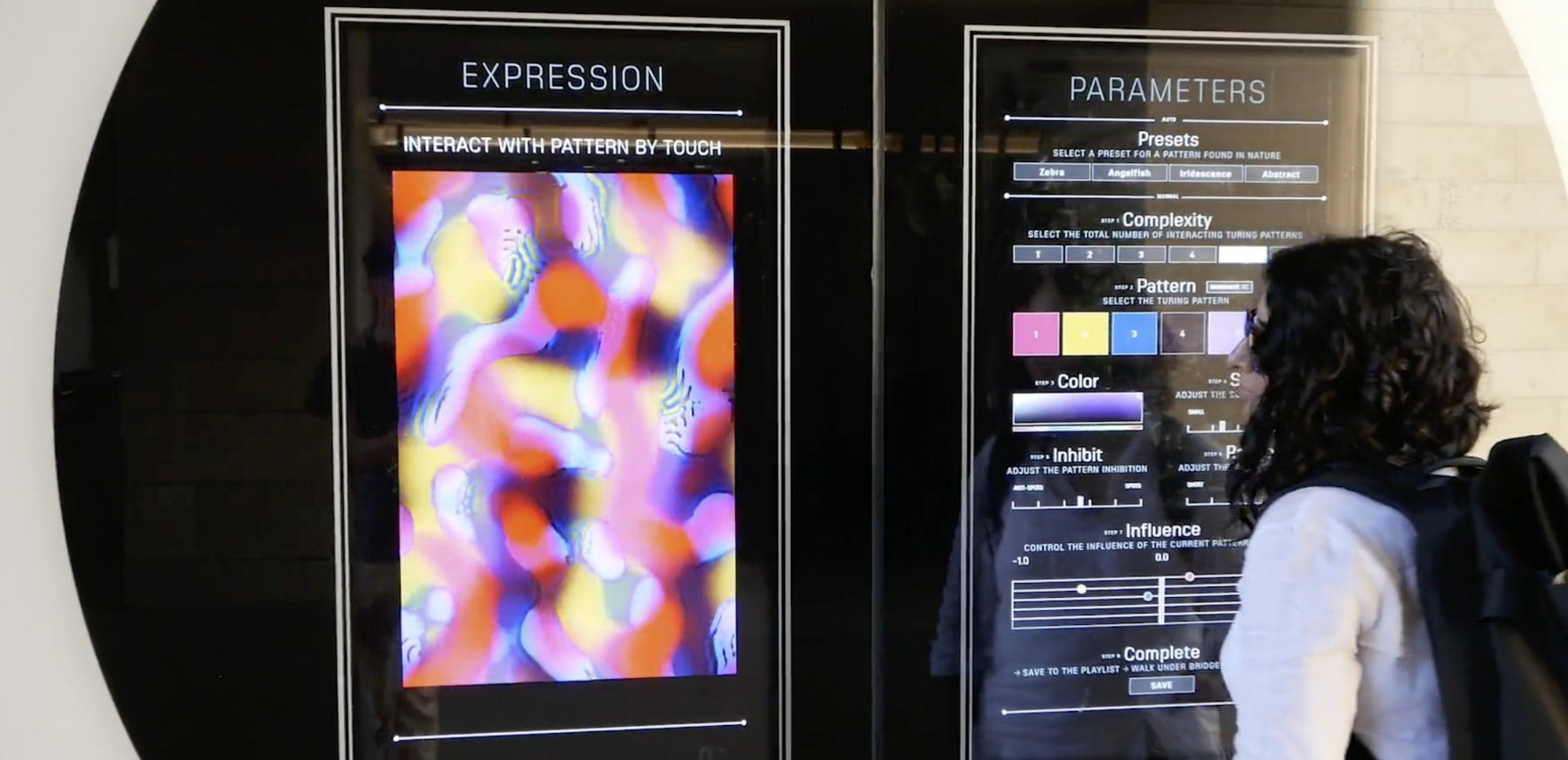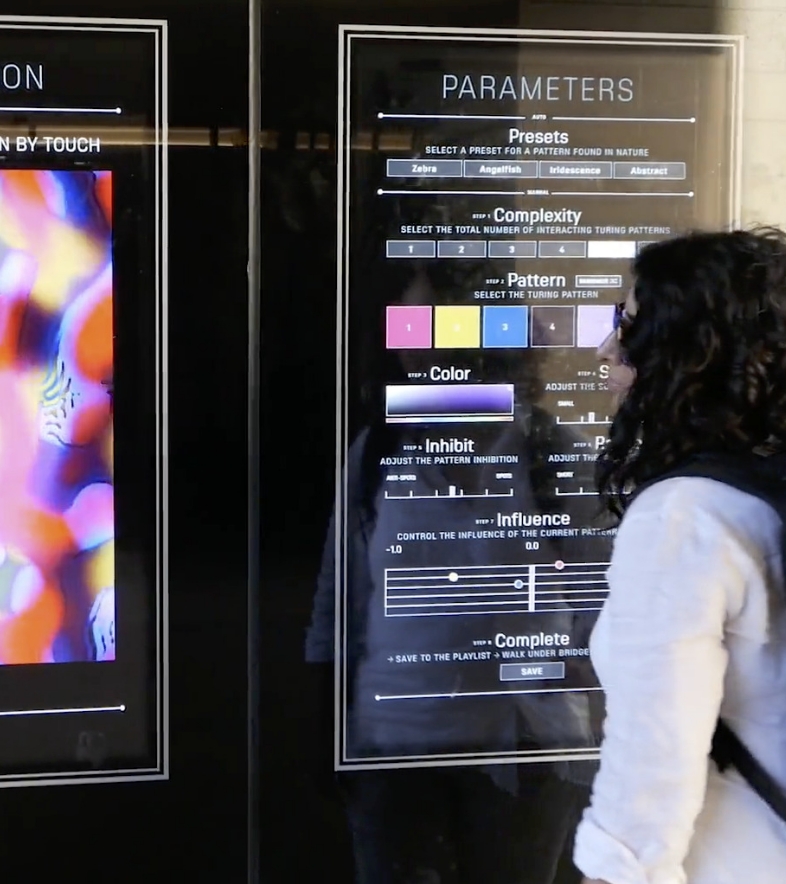
Learning is changing. As we progress further into a world of digital connections, the ways in which we teach, learn, and share are evolving more and more each day – leading to discoveries like hybrid education. Before digging into the topic of hybrid education, we should start with a definition. For this research, we define hybrid education (also commonly referred to as blended learning or mixed-mode instruction) as an approach to education that combines online and physical place-based instructional methods. This can involve a variety of education spaces, typically defined to include classrooms, class laboratories, study areas, library/stacks, and student collaboration spaces.
Hybrid in Higher Ed?
Learning is changing. As we progress further into a world of digital connections, the ways in which we teach, learn, and share are evolving more and more each day – leading to discoveries like hybrid education. Before digging into the topic of hybrid education, we should start with a definition. For this research, we define hybrid education (also commonly referred to as blended learning or mixed-mode instruction) as an approach to education that combines online and physical place-based instructional methods. This can involve a variety of education spaces, typically defined to include classrooms, class laboratories, study areas, library/stacks, and student collaboration spaces.


According to Eyal, L. & Gil, E. (2022), hybrid learning perspectives can be described in a spectrum or continuum, based on the level of autonomy the student has in accessing education. Blended learning focuses on the location of the student, where learning time spent in the classroom is reduced but not eliminated. Dynamic digital learning places less focus on the physical location and begins to consider the social dimension of student learning. In fluid learning, students drive their education – this perspective breaks traditional boundaries.

Blended Learning
- Focused on the location of the student (in a classroom vs. online)
- Time traditionally spent in the classroom is reduced, but not eliminated
- Significant amount of learning activities have been moved online

Dynamic Digital
- Physical location of student is less relevant: mobile, social, and physical spaces blend together
- Dynamic spaces used by students who carry portable, connected devices for learning
- Social dimension of learning is considered

Fluid Learning
- Learning occurs autonomously – in and beyond technology and space, driven by student's curiosity
- Non-conforming, ever-changing, breaks traditional boundaries


In the past year, there have been several national research publications describing hybrid education's impact on space design. Highlights from the 2022 EDUCAUSE Horizon Action Plan on Hybrid Learning include:
- An increase in cross-institutional degree programs, supported by on-demand learning to overcome the barrier of time-bound and in-person instruction.
- Leveraging community and industry partnerships to augment on-campus learning.
- A continuum of instructional modalities, optimizing in-person instruction for informal and experiential learning instead of credentials based on seat time – everything is hybrid!
- Prioritizing equitable access to hybrid education, ensuring students have personal devices and universal internet access; meeting unique learner needs with a flexible approach to taking courses; and providing faculty and instructors with the necessary resources and ongoing training to provide equitable teaching.


Key insights from the Campus Facilities Inventory from The Society for College and University Planning include:
- The pandemic continues to play a significant role in space planning decisions, and universities are planning for more remote learning, improved ventilation, and greater use of outdoor spaces.
- Most institutions are returning to on-campus work – approximately 80 percent of faculty and staff are in-person most days of the week.
- There is a strong emphasis on investing in computing infrastructure and IT systems to support remote teaching and collaborations.
- Organizations are less likely to build new facilities; instead, focusing on updating and adapting existing facilities.
- Making all spaces flexible for various activities and designing learning spaces to support hybrid or HyFlex learning models is crucial.
- There is a higher scrutiny of office space including evaluating the utilization and putting greater priority on student – serving spaces.

Within the report, a study of 104 institutions across the United States and Canada revealed some interesting insights. In general, institutions are more likely to update or adapt existing facilities compared to building new ones.

When asked what changes they plan to make to instructional facilities within the next year, they found that the highest priority for instructional space changes in the next year is creating more active learning classrooms (77 percent). Nearly 70 percent of respondents plan to increase the utilization of instructional spaces.


As the new, post-pandemic educational model is still being established, research on this topic continues to develop. In early 2023, SCUP released a new report, Trends for Higher Education which includes the following highlights:
- Undergraduate enrollment is continuing to decline, and the college completion rate has stalled. Almost 40 percent of students who started college six years ago have not completed a degree. Interestingly, international graduate student enrollment surged 80 percent in the 2021-2022 academic year compared to the year prior.
- There was a predicted increase in non-degree certifications; students are interested in developing career skills without the commitment to longer-term programs.
- Prospective students place a higher priority on sustainability. Nearly 75 percent of students consider a college's commitment to the environment before deciding to attend.
- There is an increased emphasis on partnerships, mergers, and acquisitions. There have been 95 mergers since 2019, largely driven by demographics, the pandemic, fewer students, and an increase in online education.
- There have been mixed emotions from the higher education community on the implications of AI/ChatGPT. Several studies are underway to understand how AI will impact teaching and learning in the future, including its effect on space needs.
- Multi-generational campuses are becoming a trend. In the US today, 100 university-based retirement communities (UBRC) now exist. These campuses are intended to facilitate meaningful interactions between older and younger generations.
- Comprehensive wellness resources are needed for the whole campus – students, faculty, and staff – and there is a desire to create more green spaces such as campus community gardens.
Flad's Innovation & Analytics team has also been studying the impact of the pandemic on hybrid education. In a study spanning 2020-2022, we delved into three higher education institutions, comprising two public and one private entity. Our research unearthed notable insights into students' and faculty members' perspectives regarding their hybrid learning experiences.
Students expressed consistent views regarding their learning experiences:
- Positive feedback on virtual lectures. Students expressed appreciation for the flexibility of listening to didactic teaching in the comfort of their own environments, with the added benefit of being able to pause and replay materials at their convenience.
- Negative feedback on sense of community. Students conveyed dissatisfaction regarding the sense of community in hybrid education, reporting missing vital connections and the sense of belonging that comes from being physically present on campus.
Faculty members shared the following perspectives on hybrid education:
- Challenges in virtual lecture delivery. Faculty members acknowledged that virtual lectures require adjustment in delivery and highlighted the need for more support in recording, editing, and producing materials to ensure a high-quality learning experience.
- Training and resource concerns. Some faculty expressed the need for training in online teaching techniques, noting a lack of adequate resources and time to conduct online teaching effectively.
- Difficulty engaging students. Some faculty also noted challenges in engaging students during virtual teaching, noting the limitations in assessing student reactions and reading the audience, which can hinder the quality of education delivered.
Within this research, one thing is certain: instruction delivery in higher education is going through a paradigm shift. Space needs are evolving to support this shift, specifically focusing on flexibility, IT infrastructure, and active collaboration classrooms. We should all be excited to continue learning how to provide optimal spaces for learners to enhance their educational experience.

References:
Eyal, L. & Gil, E. (2022). Hybrid learning spaces – a three-fold evolving perspective. In E. Gil, Y. Mor, Y. Dimitriadis & C. Koppe (Eds). Hybrid Learning Spaces. Springer
2022 Educause Horizon Action Plan: Hybrid Learning Report, 2022
Society for College and University Planning – 2022 Campus Facilities Inventory Report
Society for College and University Planning – 2023 Trends Inside Higher Education Report